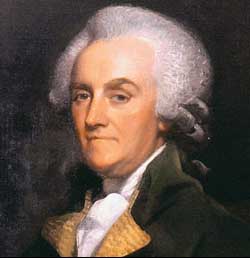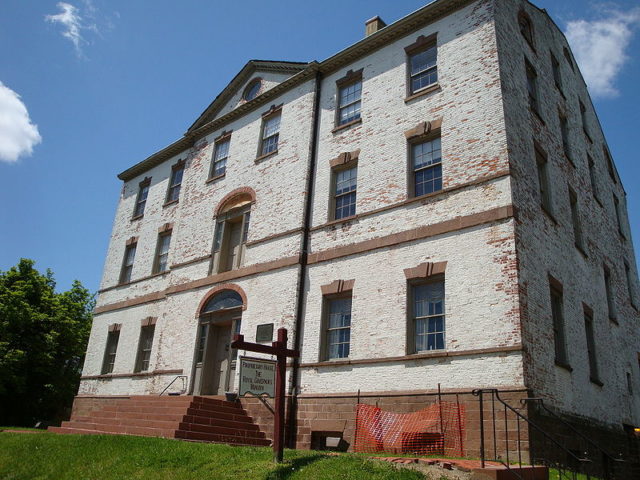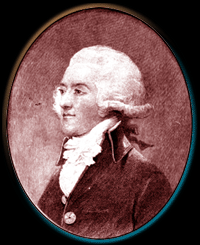William Franklin, born around 1730, was the acknowledged illegitimate son of Benjamin Franklin.
His mother’s identity is unknown as his father was secretive about his son’s origins. William was raised by his father and Deborah Read, Benjamin’s common-law wife.

William assisted his father in the famous kite experiment in 1752; even though he is portrayed as a small child in the retelling, William was actually 21 years old.
William joined the Pennsylvania provincial troops in 1746 and fought in King George’s War, working his way up and obtaining the rank of captain. He joined his father on several missions, including trips to England, where he eventually went to study law. While in London in 1762 he sired an illegitimate son named William Temple Franklin, who was sent to a foster family. In the same year, he married Elizabeth Downes and they moved to the New Jersey colony. Due to his father’s influence, he was appointed the Royal Governor of New Jersey in 1763.

The relationship between father and son became strained during the American Revolutionary War – Benjamin became one of the founding fathers of America while William stayed loyal to the Crown. In 1776, William was placed under house arrest. After the signing of the Declaration of Independence on July 4th, William was formally arrested and incarcerated in Connecticut for two years. He was released in 1778 in a prisoner exchange and moved to New York, which was still occupied by the British. Sadly, his wife had died while he was in prison as a Loyalist during the American Revolutionary War.
In New York, William tried to encourage a guerrilla war, and in 1782 he was implicated in the hanging of Joshua Huddy by a Loyalist officer.
Huddy was a known member of the Association of Retaliation, a vigilante group that killed and attacked Loyalists. Under Williams’s leadership, Loyalist troops captured Huddy and hung him out of revenge for the attacks. The events stalled peace talks between the British and American authorities.

William Franklin left American shores in 1782 for Britain and never returned to the colonies. In Britain, he became a leading spokesman for the Loyalists. Many believed that Britain should keep fighting and gain their colony back. Father and son never reconciled their differences, even though William did try. They saw each other one last time when Benjamin stopped in Britain while returning to America from France.
William died in 1813 and his grave has since been lost, but it is somewhere on the grounds of the St. Pancras Old Church cemetery.
